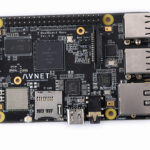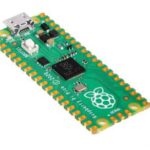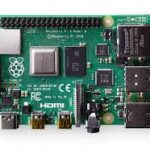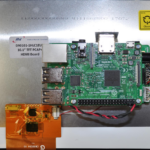In many ways, Raspberry Pi falls short as a full-fledged personal computer. The Raspberry Pi Foundation has tried to change this with its latest addition, the Raspberry Pi 400.
Launched in November of 2020, the Raspberry Pi 400 is a single-board computer in the form of a keyboard, retailing at $70 per unit or $100 as a kit. The kit includes a mouse, microSD card, power supply, connecting cables, and a beginner’s guide.
 The pros
The pros
Since its inception, Raspberry Pi has been always known as a credit-card-sized computer without the feel of a desktop computer.
RPi has, undoubtedly, become one of the most popular microcomputers, earning high accolades as an affordable computing platform in electronics and computer engineering communities.
However, the Raspberry Pi 400 offers a completely new form-factor that’s closer to a portable desktop computer. It’s similar to the Raspberry Pi 4 4GB model but with a slightly higher clock frequency and thermal tolerance. Beneath the new form factor is simply an upgraded version of the Raspberry Pi 4.
The heart of Raspberry Pi 400 is comprised of a Broadcom BCM2711 quad-core Cortex-A72 64-bit SoC that clocks at 1.8 GHz — that’s 300 MHz higher than Raspberry Pi 4. It has the same 4GB LPDDR4-3200 RAM as the RPi 4. Similarly, it also has two micro-HDMI ports that support a resolution of up to 4K and OpenGL ES 3.0 Graphics.
The RPi 400 can also connect with two displays at the same time by using HDMI cables. On the rear side of the keyboard, users will find the available ports, including:
- Two USB 3.0 ports
- One USB 2.0 port
- A gigabit Ethernet
- A MicroSD card slot
- A horizontal 40-pin GPIO header
For wireless connectivity, RPi 400 offers an onboard, dual-band IEEE 802.11b/g/n/ac Wireless LAN, Bluetooth 5.0, and BLE.
Additionally, the RPi 400 houses a large heat sink between the mainboard and keyboard, which acts as a shield. As a result, this model can tolerate much higher temperatures and works comparatively well with over-clocking.
The cons
Raspberry Pi 400 is designed to be used as a portable microcomputer so it offers zero CSI or DSI connectors. This means it’s not possible to connect the official RPi camera and touchscreen with this new model. This is a significant loss for those interested in creating several types of projects.
Granted, the lack of a touchscreen can be overcome with a display. But the lack of a CSI port means it’s only possible to use USB webcams. The RPi 400’s horizontal GPIO header can be accessed using jumper wires, but a breakout board is required to connect a HAT or pHAT.
It’s worth repeating: RPi 400 is simply a portable computer in a keyboard. It’s not intended for use as a testbed for embedded computing.
Unfortunately, the Raspberry Pi 400 hasn’t quite overcome the drawbacks of the platform as a desktop computer. For example, despite a superior thermal performance, this model suffers at times from overheating issues compared to typical desktop computers.
The board still relies on a MicroSD card for secondary memory and lacks a GPU. So, the Raspberry Pi 400 is more of a cosmetic upgrade rather than a complete replacement for a typical desktop computer.
The verdict
The Raspberry Pi 400 offers a new keyboard form-factor that’s unique and convenient to use. Simply connect it to any display with an HDMI port and a USB mouse, and you’ve got a desktop computer.
However, the new design lacks certain capabilities as an embedded systems platform, including the CSI and DSI ports. It also requires breakout boards for connecting HAT and pHAT.
Raspberry Pi 400 is designed to be an affordable, portable microcomputer. Just don’t expect a full-fledge desktop in terms of memory and performance. But, given the cost, the RPi 400 still makes an ideal choice for those new to computing and who want enhance their education at a small price tag.




Leave a Reply